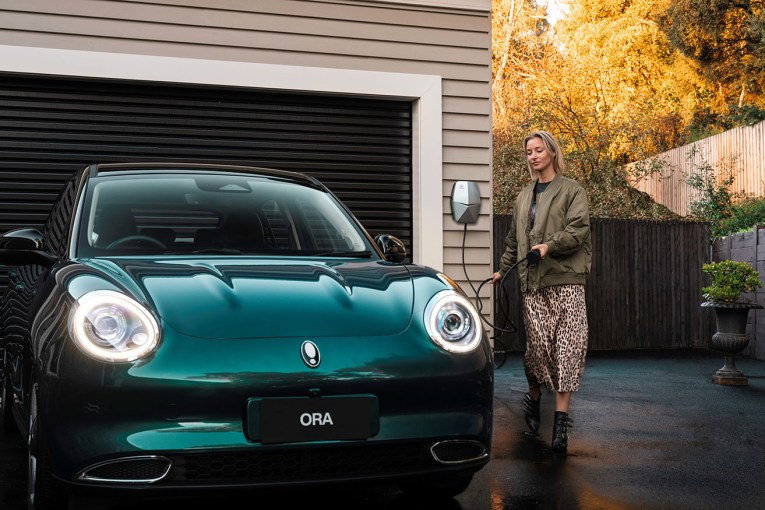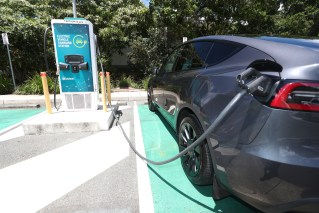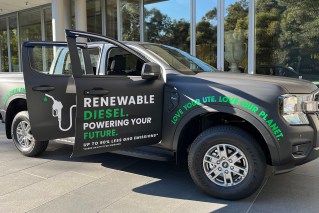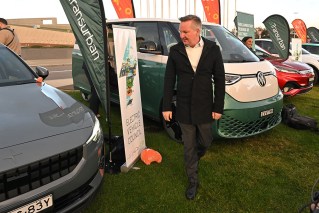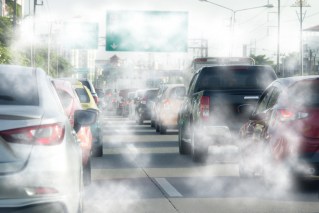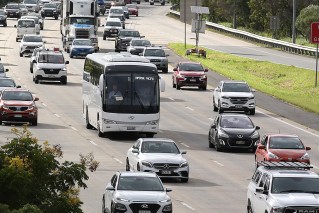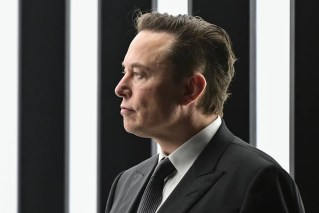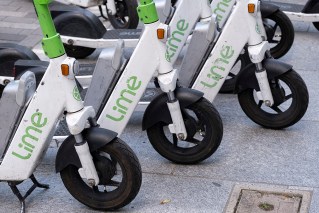Toyota Mirai: This zero emissions, hydrogen-fuelled car is a first for Australia

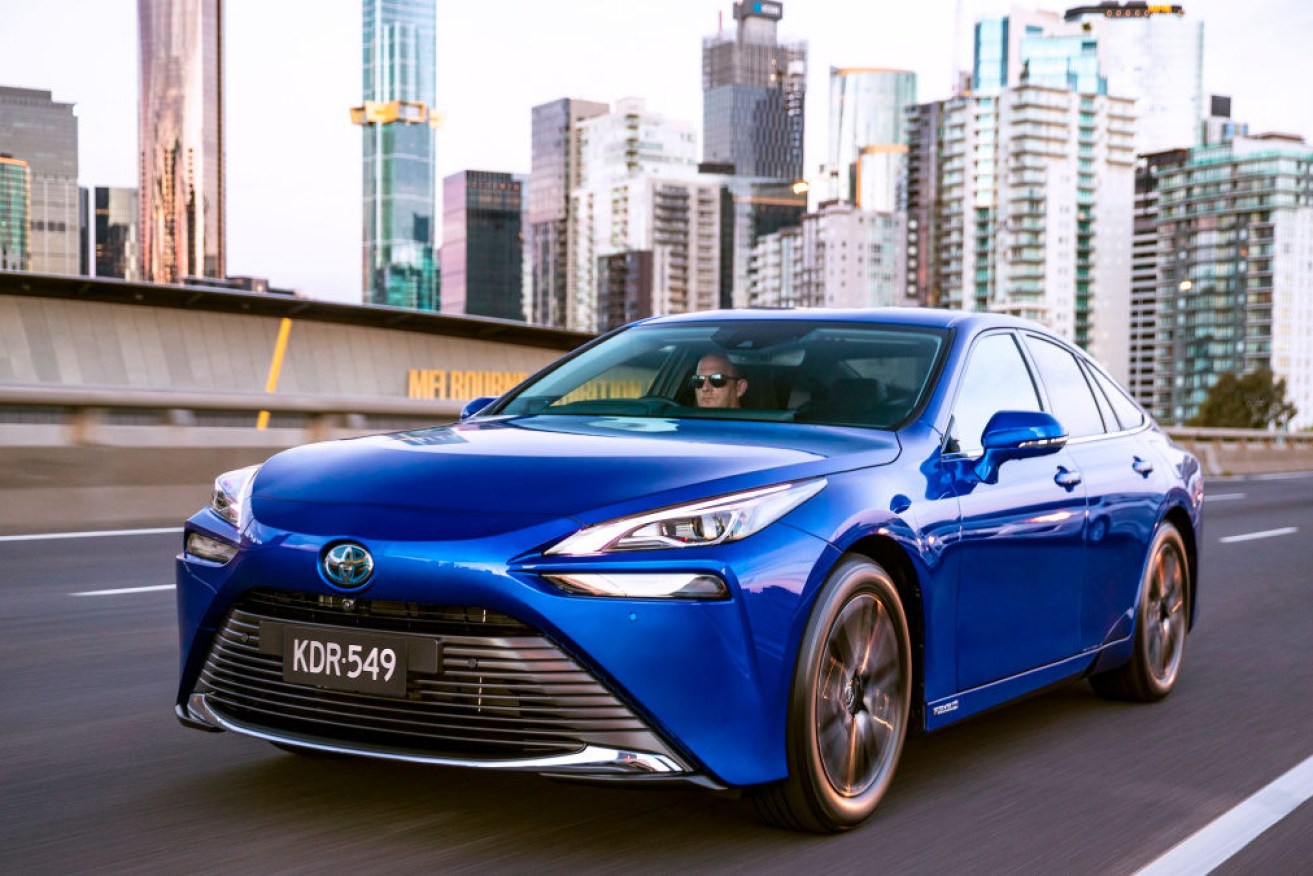
The new, hydrogen-fuelled Toyota Mirai is an exciting first for Australian roads. Photo: Toyota
Toyota has driven yet another zero emissions automotive alternative onto Australian roads. The hydrogen-fuelled car.
Just days after the dominant player in local new vehicle sales confirmed it would have its first battery electric vehicle on-sale here by 2023, we’re driving a sleek sedan called the Mirai.
Rather than storing electricity in batteries to power its electric motor, the Mirai uses hydrogen gas to produce it onboard via a chemical reaction.
What’s not to like? Well unlike BEVs that can recharge anywhere the national electricity grid has a plug, there is virtually nowhere the Mirai can refuel in Australia.
Which explains why Toyota is importing just 20 Mirais for now as a test exercise. They’ll be handed out on three-year/60,000km leases costing $1750 per month, or $63,000 all-up. Then the cars will have to be handed back.
That total incudes hydrogen refuelling, while servicing will be a $2693 additional cost over three years.
The 20 new Toyota Mirai vehicles supersede 10 first-gen examples that were distributed to Melbourne councils in a 2018 trial.
What is it?
The Mirai is a five-seat four-door sedan about the size of Toyota’s ubiquitous Camry.
But underneath the handsome exterior and well-appointed interior is a drivetrain totally alien to most of us.
It stores hydrogen in three tanks which feed a fuel cell stack located up-front under the bonnet where an internal combustion petrol or diesel engine would sit in an orthodox car.
The 128kW fuel cell stack splits the hydrogen into electricity and drinkable water, sending the former to a 134kW/300Nm e-motor located on the rear axle while the latter is expelled onto the ground via an exhaust pipe.
Why is it important?
A small number of car manufacturers continue to bang the hydrogen drum. Hyundai has also recently rolled out a small fleet of Nexo fuel cell electric vehicles (or FCEVs) in Australia.
FCEVs can be refuelled in just a few minutes like petrol cars and have an equivalent range. The Mirai can travel about 650km between visits to the bowser. BEVs are getting better all the time, but they can’t match that double act.
Australia is a country with an abundant supply of hydrogen and that’s a strong argument in the Mirai’s favour. But the lack of refuelling stations is a huge impediment. They are appearing – Toyota just opened one in Melbourne this year – but very slowly.
Toyota optimistically says it could be selling Mirais through its dealers to private customers in two to three years, but that’s wholly dependent on the emergence of a refuelling network.
What does the Toyota Mirai get?
The Mirai is decently equipped, just like you would expect a $60K car to be. It comes standard with synthetic leather trim, an 8.0-inch digital instrument display, 14-speaker JBL audio, dual-zone climate control and a 12.3-inch touch-screen that incorporates satellite navigation, Bluetooth connectivity and Apple CarPlay and Android Auto compatibility.
Safety features include a pre-collision system with day/night pedestrian and day cyclist detection, emergency steering assist, lane trace assist, lane departure alert, intersection turn assist, road sign assist (certain speed signs), auto high beam and adaptive cruise control.
In addition to this, it is also fitted with blind spot monitor and rear cross traffic alert, parking support brake, seven airbags and a panoramic view monitor to aid parking.
What do we like?
A short urban drive established the Mirai has the typical characteristics of a vehicle powered by an electric motor. It has strong initial response from standstill and when looking for overtaking urge from low-speed.

There is a touch of Toyota’s luxury brand Lexus about the new Mirai. Photo: Toyota
It is also very quiet, reflecting both its drivetrain and Toyota’s desire to make this a car with a premium ambience. A soft-edged suspension tune also delivers a limo-like character.
Sitting in the Mirai it seems a little bit special, with comfortable seating, a high level of appointments and tech gizmos including the panoramic touchscreen on the dash. There is a touch of Toyota’s luxury brand Lexus about it.
What we don’t like
Because of the three hydrogen tanks under the floor the Mirai has only a small 272 litre boot without a split-fold function. I wouldn’t want to sit in the middle rear seat because the tanks also compromise legroom.
The steering wheel does not adjust for reach, which means some drivers may struggle to get entirely comfortable.
Buy it or not?
Well, for almost all of us that is a moot point because the Mirai simply isn’t available.
But the important point Mirai makes is FCEV technology is mature. Sadly, as we have already pointed out several time, the refuelling network in Australia isn’t.
Until that is addressed the Mirai remain an appealing curiosity.
